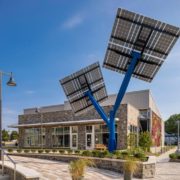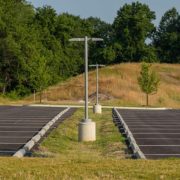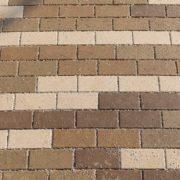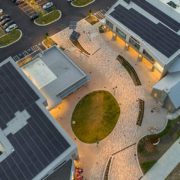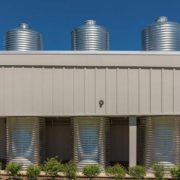Rain Garden
Enjoy the beauty of our rain garden.
- Rain gardens are one way to decrease water runoff, increase water infiltration, and hold the soil in place during rainstorms.
- Our native plants were chosen to provide a progression of constant color throughout the year.
- Native plants supply pollinators and other wildlife with a wide variety of food .
- Our plants thrive on Maryland’s typical amounts of rainfall, so they rarely need watering.
Click here to learn how to construct a rain garden of your own on the Howard County Website.


